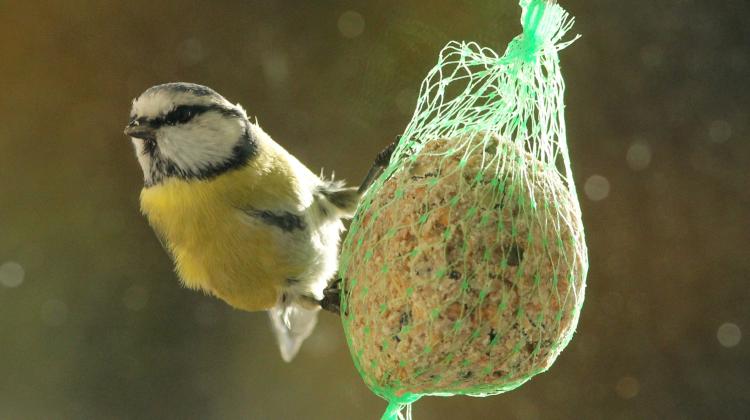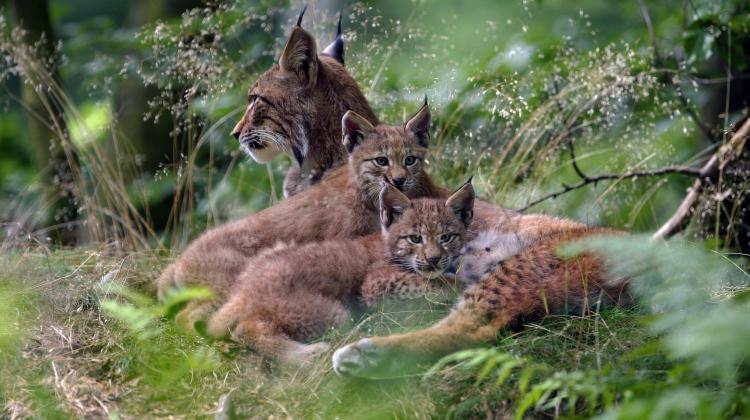How do plants see the world? Dr. Jedynak on how plants come to life in a flash
A seed can lie in the ground for months, years, and even centuries, and when conditions become favourable - germination can be stimulated by a flash of light. Biologist Dr. Paweł Jedynak from the Jagiellonian University talks about how plants "see" light.
Plants do not have eyes, but that does not mean they are not able to recognize light. After all, it is crucial for photosynthesis, and therefore their existence. Plants must be able to distinguish between day and night and recognize the side from which it is illuminated in order to efficiently process energy.
Dr. Paweł Jedynak - a finalist of the Polish edition of FameLab - talks in an interview with PAP about how plants "see" the world. The scientist studies the processes that, for example, make the seed begin to sprout under the influence of light and trigger mechanisms leading to photosynthesis.
"There are several classes of plant receptors that are responsible for the recognition of light" - the biologist says. He mentions that, for example, plants are equipped with cryptochromes - light sensors that are also present in human eye cells. "These receptors help distinguish between day and night and control our biological clock" - he says. They have a similar function in plants.
I LIKE TO MOVE IT MOVE IT
The other receptors responsible for light recognition are phototropins. "They control the movement of plants towards the light, they provide information on the direction, in which the plant should turn in order to more efficiently carry out photosynthesis" - he says.
The biologist mentions that plants do not have muscles, and the movements that allow them to bend are growth movements. The plant must therefore "calculate" on which side they should to grow faster to lean towards the light. "There is a whole cascade of running processes, thanks to which some cells grow faster, they are bigger, they divide faster. But these movements are so slow that we usually do not notice them" - the scientist adds.
NOT WANTING TO STAY IN THE SHADE
When a plant is in the shade of other plants, it begins to grow faster to outgrow its competition and win the race for light. "Phytochromes are responsible for this shade avoidance reaction" - Dr. Jedynak says. These receptors "count" the portions of red light, which is present in higher amounts in the shade of other plants.
Understanding of the processes associated with the reception of light allowed to grow new varieties of plants, including cereals that arrange their leaves so as not to steal the light from other plants. As a result, plants do not compete for resources, and each can succeed. Farmers will benefit because they will harvest more crops from the same area.
SLEEPER AGENTS WAITING FOR THE BRIGHT FUTURE
The researcher adds that phytochromes also control the germination of plants, as many angiosperms require light for germination. "Seeds can remain in the soil for many years. They are sleeper agents ready to conquer a new territory. They remain hidden until favourable conditions occur" - says Dr Jedynak. When the right time comes and the seed is exposed - for example in connection with a landslide - it must recognize that it is its time and start sprouting. If it fails to catch up, the competition will overtake it: other sleepers, napping in the vicinity.
Germination of seeds buried in the soil may also be stimulated by temperature change, but then the seedling struggles with the problem of darkness. To obtain good access to light and start photosynthesis, the seedling must break through the soil.
The changes that occur in angiosperm plants in the dark - and help the germinating plant survive and break through to the soil surface - are called etiolation. During etiolation, up to one third of the plant`s genome changes its functioning - even about 10,000 genes.
GREEN IS UNNECESSARY IN THE DARK
Anyone who has seen plant sprouts grown in a dark room knows that they are not green, but rather pale. The same thing happens underground, when the seedling is looking for the sun. Instead of becoming green, it must invest in growth - climb up to emerge from the ground.
There is no point wasting energy on the production of an expensive dye - chlorophyll - when there is no sunlight lacking. Only when the amount of light is sufficient, the seedling will transfer energy to the production of the photosynthetic apparatus. It will become green and ready to produce energy from light.
"The complexes responsible for photosynthesis are like complicated puzzles that are solving themselves before our eyes. We want to find out what controls the arrangement of these puzzles. This is the goal of the project I`m currently participating in" the biologist says.
Dr. Paweł Jedynak conducts research in the SONATA BIS NCN grant headed by Dr. Beata Myśliwa-Kurdziel from the Jagiellonian University.
PAP - Science in Poland, Ludwika Tomala
lt/ zan/ kap/
tr. RL
Przed dodaniem komentarza prosimy o zapoznanie z Regulaminem forum serwisu Nauka w Polsce.



















